What are the best Panasonic lenses with a solid performance?
Panasonic is a major Japanese multinational electronics company well-known all over the world. This brand manufactures reliable lenses of perfect quality. If you are looking for a model with exclusive optical elements and durable build to take outstanding pictures, don’t hesitate to try Panasonic lenses.
Nowadays, there is a huge variety of lenses to choose from. They differ in features and prices. To help you find the most suitable lens for your needs, I have prepared a brief review of the best Panasonic lenses available on the market.
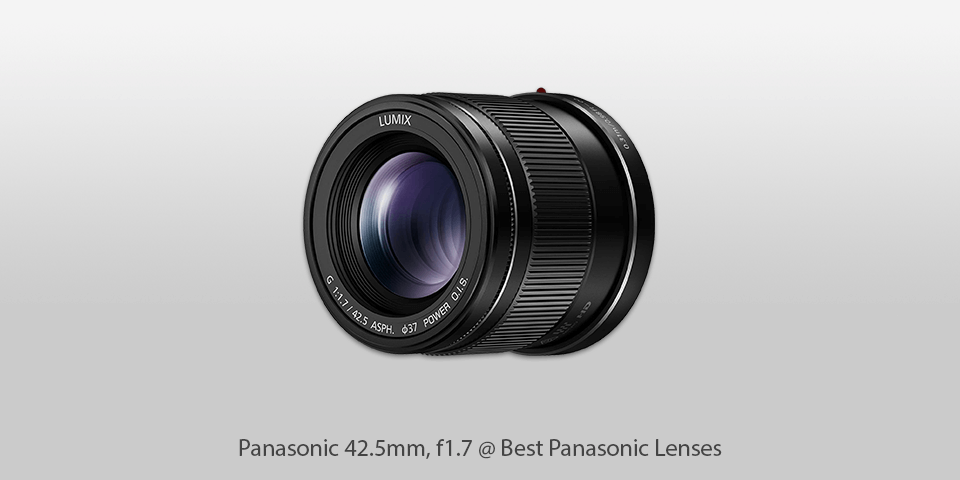
Mount: Micro Four Thirds | Diaphragm blades: 7 | Autofocus: Yes | Min focus distance: 0.31 m | Max magnification: 0.2x | Filter thread: 37 mm | Dimensions (WxL): 55x50 mm | Weight: 130 g
⊕ Perfect for portrait photography
⊕ Durable construction
⊕ Optical stabilization
⊕ Portable design
⊖ Sensitive to flare
The Panasonic 42.5mm, f/1.7 can be considered the sharpest micro four-thirds lens created by this brand. It works great on a mirrorless camera. This lens is provided with an excellent image stabilization system. It reduces blur caused by camera shake that happens when you are shooting without a tripod.
The lens has an advanced design. The mount is made of metal, while the body has a matte black metallic finish, which looks very attractive. Besides, the lens is extremely lightweight, so you can easily take it with you anywhere.
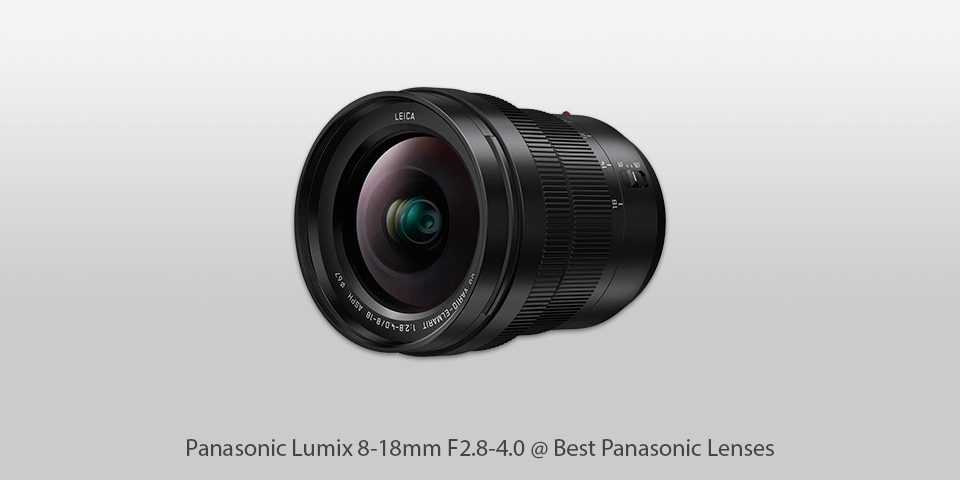
Mount: Micro Four Thirds | Diaphragm blades: 7 | Autofocus: Yes | Min focus distance: 0,23 m | Max magnification: 0.12x | Filter thread: 67 mm | Dimensions (WxL): 73.4x88 mm | Weight: 315 g
⊕ Irreproachable image quality
⊕ 67mm filter
⊕ Great autofocus
⊕ Sturdy construction
⊖ High price
The Lumix 8-18mm f2.8-4.0 is one of the best Panasonic lenses. It guarantees irreproachable quality and has the most innovative and reliable design. Using this lens with an 8-18mm focal range and zoom ratio of 2.3X, you will enjoy taking photos.
If you use it on a four-thirds camera, you will get a 50mm equivalent of 16-36mm. Your photographs will be amazingly sharp at any focal length. Besides, you will enjoy a nice bokeh effect.
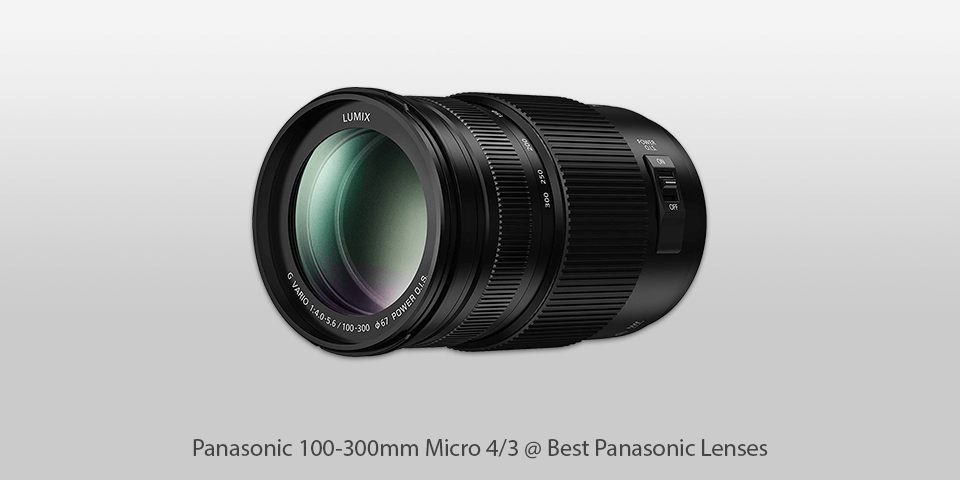
Mount: Micro Four Thirds | Diaphragm blades: 7 | Autofocus: Yes | Min focus distance: 1.5 m | Max magnification: 0.21х | Filter thread: 67 mm | Dimensions (WxL): 73.6x126 mm | Weight: 520 g
⊕ Excellent sharpness
⊕ Silent focusing
⊕ Great optical stabilization
⊕ Compact design
⊖ Long-end softness
⊖ Slow focus
Unlike its competitors, this Panasonic telephoto lens comes at an affordable price. The Panasonic 100-300mm Micro 4/3 f4-5.6 has a list of attractive features, among which you will find great optical stabilization, minimizing the shake of the camera.
This lens is mostly made of plastic, except for the metal mount, which is quite durable. It guarantees a smooth shooting experience and delivers high-quality photos. Though in my opinion, Panasonic has more impressive lenses, this model is quite a decent choice.
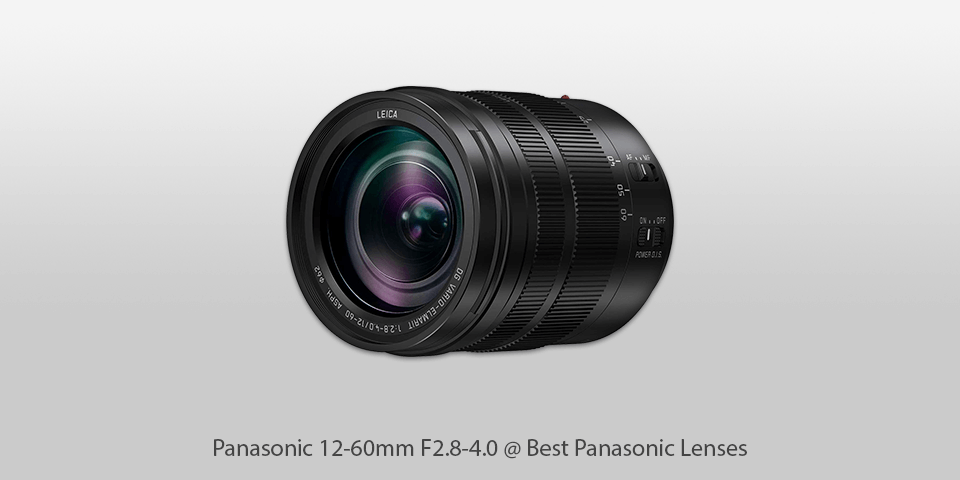
Mount: Micro Four Thirds | Diaphragm blades: 9 | Autofocus: Yes | Min focus distance: 0.2 m | Max magnification: 0.3x | Filter thread: 62 mm | Dimensions (WxL): 68.4x86 mm | Weight: 320 g
⊕ Irreproachable sharpness
⊕ Excellent manual focusing
⊕ Picture stabilization
⊕ Weather-proof
⊕ Great distortion control
⊖ Adjustable brightness
⊖ Expensive
The Panasonic 12-60mm F2.8-4.0 is one of the best lenses for Micro Four Thirds cameras. It provides you with a 24-120mm equivalent zoom. This MFT telephoto lens is water- and dust-proof, and has a nice and comfortable design. It guarantees a perfectly sharp image, focuses quickly and has an excellent optical stabilization system.
If you want to get a multipurpose zoom model for an MFT camera, check out the Leica lenses for Panasonic, for instance, the DG Vario-Elmarit 12-60mm f/2.8-4 Asph. Although this lens is more expensive, it offers an amazing image quality.
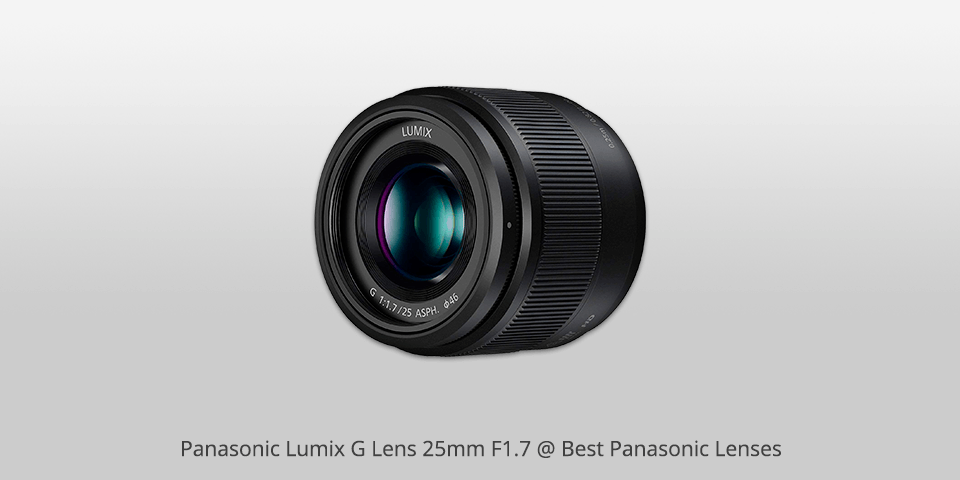
Mount: Micro Four Thirds | Diaphragm blades: 8 | Autofocus: Yes | Min focus distance: 0.25 m | Max magnification: 0.14x | Filter thread: 46 mm | Dimensions (WxL): 60.8x52 mm | Weight: 125 g
⊕ Affordable price
⊕ Excellent sharpness
⊕ Quick and silent autofocusing
⊕ Portable design
⊖ Lack of weather sealing
⊖ No optical stabilization
The Lumix G 25mm is one of the best Panasonic lenses for shooting at night, which provides good control over the depth of field, along with a great f/1.7 aperture. This model can be used as a 50mm equivalent lens.
As it wights only 125g, you can take it with you everywhere. The body is made of polycarbonate, the mount is metal. Though the price on this lens is far from the highest, the image quality it delivers is quite decent. However, there are some minor distortions in the corners.
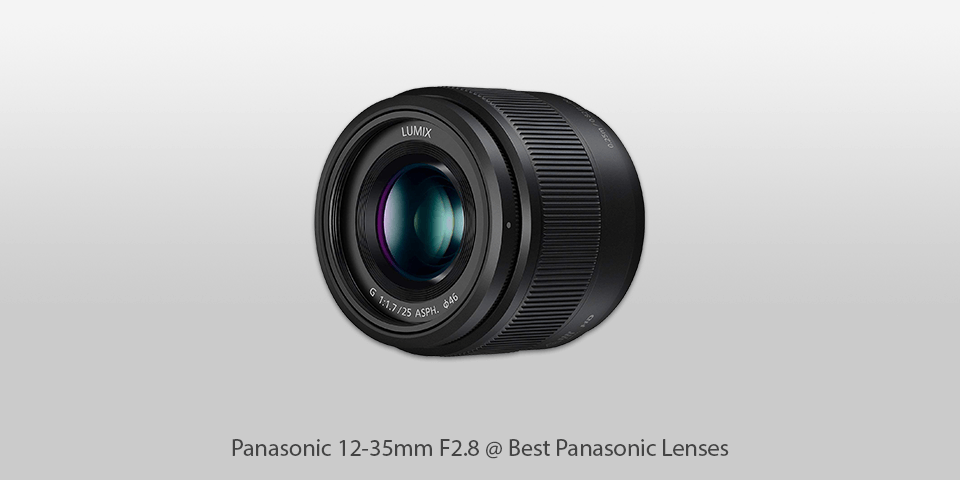
Mount: Micro Four Thirds | Diaphragm blades: Micro Four Thirds | Autofocus: Yes | Min focus distance: 0.25 m | Max magnification: 0.17x | Filter thread: 58 mm | Dimensions (WxL): 67.6x73.8 mm | Weight: 305 g
⊕ Perfect sharpness
⊕ Great image stabilization
⊕ Weather-proof
⊕ Irreproachable build quality
⊖ High price
The 12-35mm F2.8 is one of the greatest Panasonic zoom lenses. If you can afford the high price, don’t hesitate to buy this model, as it will fully satisfy your needs. The f/2.8 aperture guarantees excellent performance across the zoom range.
It delivers impressive results even in low-light conditions and ensures control over the depth of field. The autofocusing motor works very quietly. If you use this lens on the Lumix G body, the autofocus will work even faster.
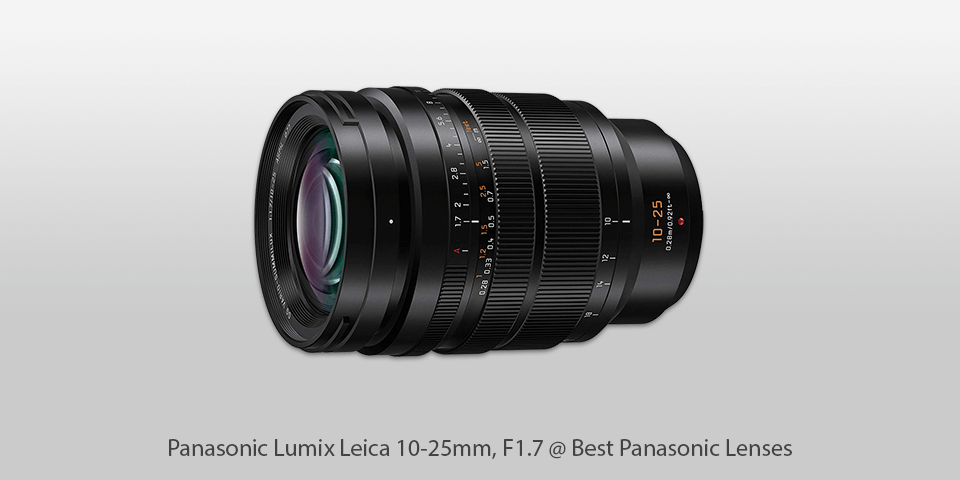
Mount: Micro Four Thirds | Diaphragm blades: 9 | Autofocus: Yes | Min focus distance: 0.28 m | Max magnification: 0.14x | Filter thread: 77 mm | Dimensions (WxL): 87.6x128 mm | Weight: 690 g
⊕ Quick f/1.7 aperture
⊕ Nice bokeh effect
⊕ Weather-proof
⊕ Quick and precise autofocus
⊖ Sensitive to backlighting flare
⊖ High price
It is one of the most attractive Leica lenses for Panasonic, which covers a range of the most popular focal lengths. If you are going to shoot in low-light conditions, you will highly appreciate its quick f/1.7 aperture, which provides you with the best possible result.
It also makes the background blurred when you use it with MFT-format cameras. The image quality stays consistent across the zoom range. The lens is made of metal, its body is water- and dust-resistant. This model looks and feels expensive, which makes it worth the high price.
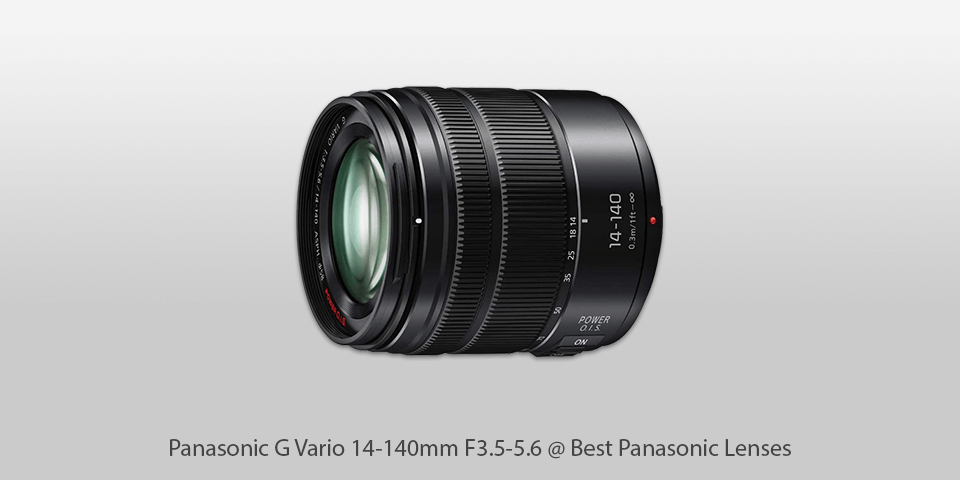
Mount: Micro Four Thirds | Diaphragm blades: 7 | Autofocus: Yes | Min focus distance: 0.3 m | Max magnification: 0.25x | Filter thread: 58 mm | Dimensions (WxL): 67x75 mm | Weight: 265 g
⊕ Excellent sharpness
⊕ Solid build
⊕ Impressive AF
⊕ Optical stabilization
⊖ Aperture might be slow at the long end
This model is one of the best Panasonic lenses as it has a 10x zoom with a range of 14-140 mm, which guarantees excellent shots. It makes it a perfect universal lens for vacation.
An optical stabilization system is great at minimizing the blur caused by the shake that appears when you are holding a camera in your hands. On the barrel, you will find a special switch to activate the OS system. Turn it on and enjoy the sharpest pictures at 1/20 sec shutter speed, at 140 mm.
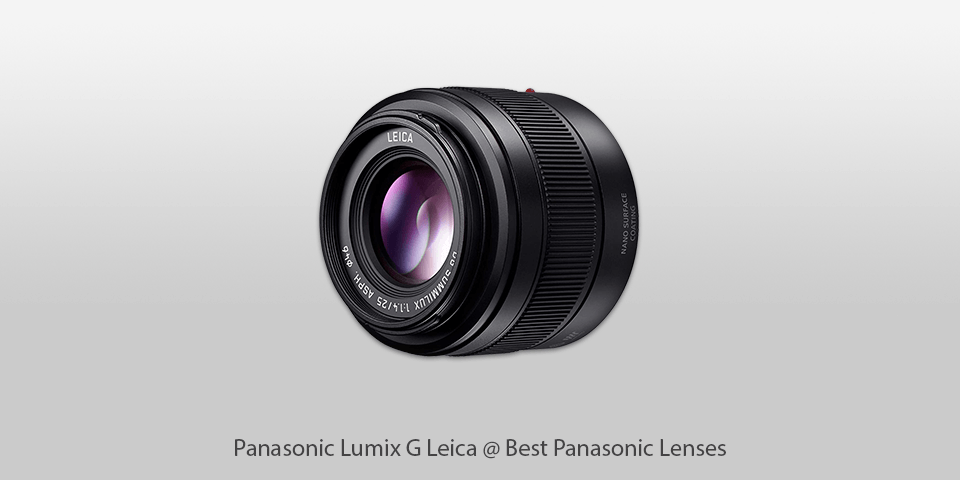
Mount: Micro Four Thirds | Diaphragm blades: 7 | Autofocus: Yes | Min focus distance: 0.3 m | Max magnification: 0.11x | Filter thread: 46 mm | Dimensions (WxL): 63x54.5 mm | Weight: 205 g
⊕ Amazingly sharp picture
⊕ Minimal chromatic aberration
⊕ Excellent build quality
⊖ Not the best autofocus
⊖ Expensive
The Panasonic Lumix G Leica produces a soft-focusing effect and delivers the most precise image rendering. The f/1.4 aperture performs wonderfully in low light and guarantees precise focusing when you are using a selective focus.
Like other Panasonic lenses, the Lumix G Leica is weather-sealed and can be used in unfavorable outside conditions. You will enjoy its quick and accurate autofocus and a solid design.
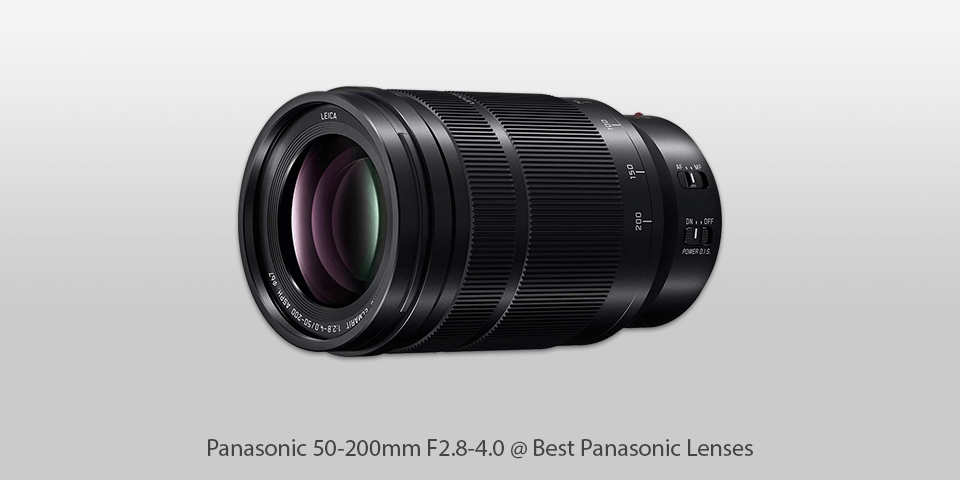
Mount: Micro Four Thirds | Diaphragm blades: 9 | Autofocus: Yes | Min focus distance: 0.75 m | Max magnification: 0.25x | Filter thread: 67 mm | Dimensions (WxL): 76x132 mm | Weight: 655 g
⊕ Sharp picture
⊕ Excellent image quality
⊕ Quick autofocus
⊕ Weather-proof
⊖ Diffraction at small apertures
The Panasonic 50-200mm F2.8-4.0 is very simple to work with and delivers impressive results. Besides, this Panasonic telephoto lens is quite affordable. The model can be used even in the most severe weather conditions, as it is protected from water, dust and extreme temperatures.
The lens comes with a 5-axis optical stabilization system. The bright f/2.8-4.0 aperture guarantees great results, even if you are shooting in low-light conditions. This lens is a great tool for those who are interested in portrait photography. Thanks to the long focal length, the subject will be separated from the blurred background.
| Image | Name | Features | |
|---|---|---|---|
 |
Panasonic 42.5mm, f1.7
Our Choice |
CHECK PRICE→ | |
 |
Panasonic Lumix 8-18mm F2.8-4.0
Sharpest |
CHECK PRICE → | |
 |
Panasonic 100-300mm Micro 4/3
Telephoto |
CHECK PRICE → |
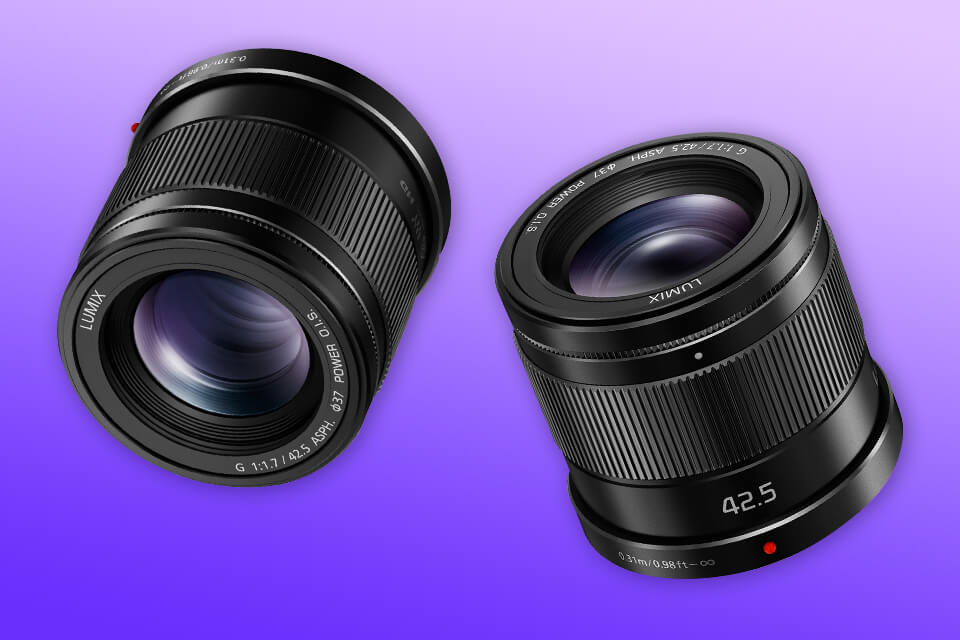
If you have a mirrorless compact-system Lumix G camera, I recommend you to take a look at Panasonic M43 lenses. They have awide variety of focal lengths and different types of zoom, which will satisfy even the most demanding photographer.
Such lenses guarantee amazing quality and ensure the best shots. They are often marked with the Leica DG seal of quality.
Before you purchase a lens, it is important to understand how you are going to use it. Then, don’t make sure to check the recommendations below to make an informed choice.
If you want to take portrait photos, I recommend you use a lens with a wide angle of view that allows you to increase the focal length gradually.
If the focal length is fixed, a lens can transmit more light, which guarantees better shots in low light. Besides, such lenses are smaller.
Wide-angle lenses are excellent for landscape, architecture and interior design photos.
A Panasonic telephoto lens allows you to take quality pictures of faraway subjects. It is a perfect choice for reportage photography, sports, etc.
Though the lenses of this type have larger weight, they offer impressive magnification.
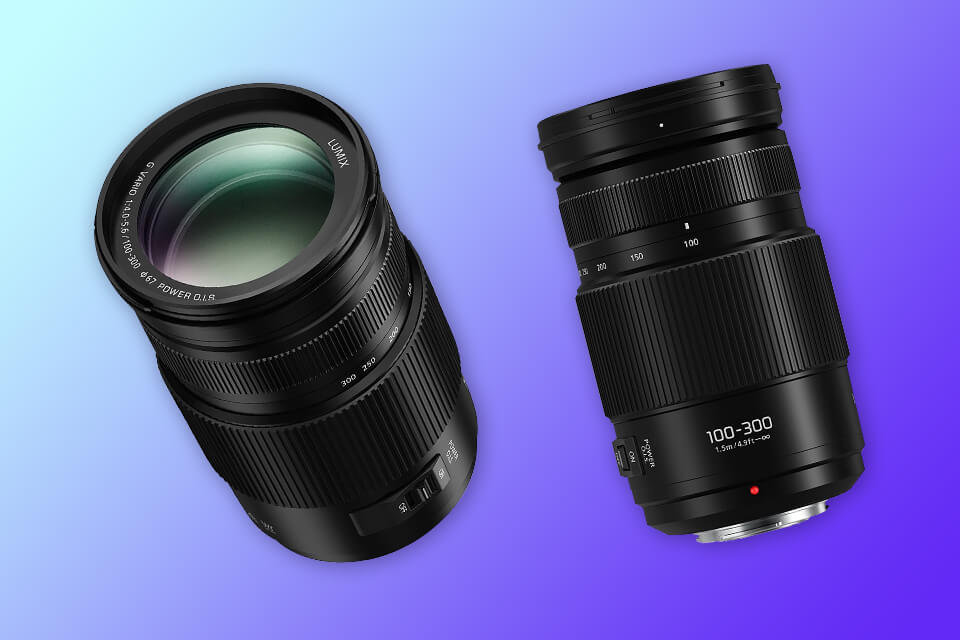
If you are looking for a lens to take images with a maximum level of detail, such as product and nature photos, take a look at macro lenses.
The Micro Four Thirds (MFT) mount.
Unlike traditional 35mm film cameras, the Micro Four Thirds sensor models have a crop factor of 2.0. The focal length is very similar to that one of a full-frame camera, though the field of view is twice smaller.
They can be used with the Micro Four Thirds cameras. If you compare them with DSLR lenses, the Micro Four Thirds are smaller and cheaper, as such cameras have smaller sensors.
Yes, any MFT lens can be used with all Micro Four Thirds systems.

 Rating
Rating